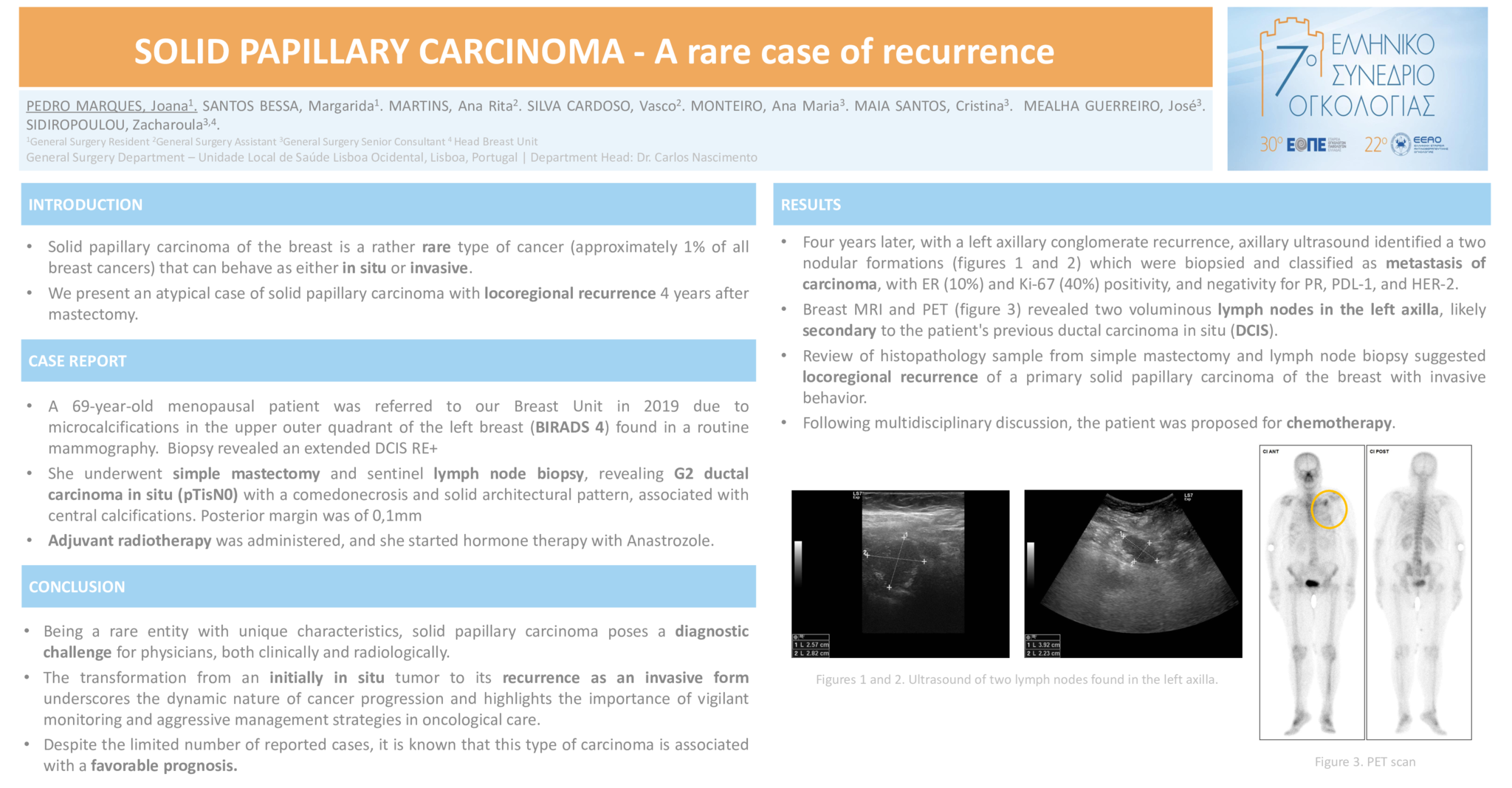Introduction:
Solid papillary carcinoma of the breast is a rather rare type of cancer (approximately 1% of all breast cancers) that can behave as either in situ or invasive. We present an atypical case of solid papillary carcinoma with locoregional recurrence 4 years after mastectomy.
Clinical Case:
We report the case of a 69-year-old postmenopausal patient referred to a Senology appointment due to microcalcifications in the upper outer quadrant of the left breast (BIRADS 4) found in a routine mammography. She underwent simple mastectomy and sentinel lymph node biopsy, revealing intermediate-grade ductal in situ carcinoma with a comedonecrosis and solid architectural pattern, associated with central calcifications, and no positive lymph nodes. Adjuvant radiotherapy was administered, and she started hormone therapy with Anastrozole. Four years later, with a left axillary conglomerate recurrence, soft tissue ultrasound identified a nodular formation which was biopsied and classified as metastasis of carcinoma, with ER (10%) and Ki-67 (40%) positivity, and negativity for PR, PDL-1, and HER-2. Breast MRI and PET revealed two voluminous lymph nodes in the left axilla, likely secondary to the patient's previous ductal carcinoma in situ (DCIS). Review of the slides from simple mastectomy and lymph node biopsy suggested locoregional recurrence of a primary solid papillary carcinoma of the breast with invasive behavior. Following multidisciplinary discussion, the patient was proposed for chemotherapy.
Conclusion:
Being a rare entity with unique characteristics, solid papillary carcinoma poses a diagnostic challenge for physicians, both clinically, analytically, and radiologically. Despite the limited number of reported cases, it is known that this type of carcinoma is associated with a favorable prognosis.




